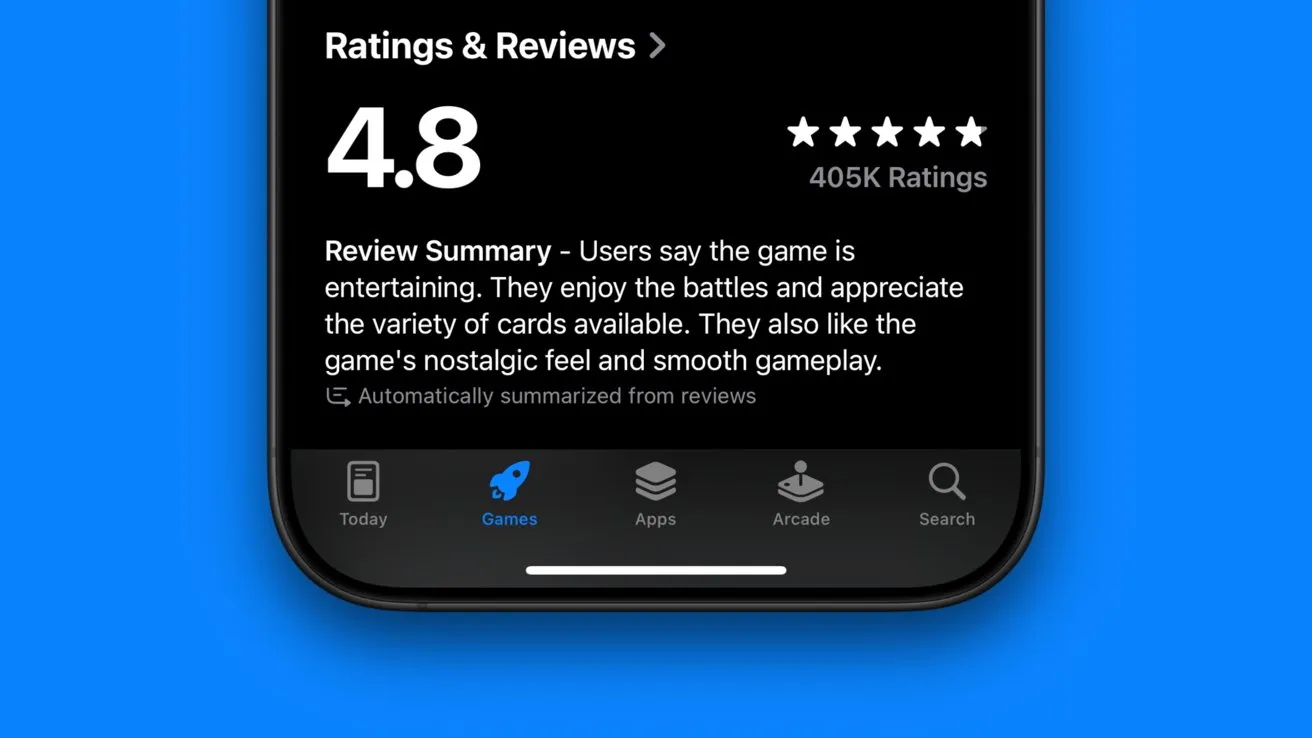The App Store now has AI review summaries – here’s how they work

With the iOS 18.4 update, App Store users have noticed a new improvement: app reviews are now accompanied by compressed AI summaries. This innovation was announced back in October 2024, but it’s only now that Apple has explained in detail exactly how the mechanism for generating these short summaries works. In the company’s official blog post on machine learning, Apple revealed the details of the process and the goals of implementing the technology.
Apple’s official blog post on machine learning reveals the details of the process and the goals of implementing the technology.
The App Store’s AI summaries are designed to make app selection easier by offering users a compact and unbiased squeeze of opinions. Apple explains how artificial intelligence highlights what’s important, filters out the noise, and balances emotion to make the summaries really help you make a decision.
Purpose: To make reviews clearer and more useful
The main idea behind implementing AI reviews is to improve the user experience. Instead of reading dozens of reviews that are often disparate and subjective, a person gets a structured squeeze that reflects the overall mood and key themes. However, the task was not as simple as it seemed. App Store reviews vary: long and short, relevant and outdated, written after major updates or, on the contrary, before important features were introduced. Some contain spam or insults. All of this makes automated processing difficult.
To make the summaries not only concise but useful, Apple has created a multi-step process that combines filtering, analysis, and generation using specially trained LLMs (large language models).
Apple has created a multi-step process that combines filtering, analysis, and generation using specially trained LLMs.
How AI-driven review summarization works in the App Store
Cleaning up reviews
Before analyzing, reviews containing spam, rudeness, or irrelevant content are eliminated from the pool. This allows you to focus only on quality reviews that provide useful information.
Insight Extraction
At this stage, each review is broken down into separate semantic fragments. Each insight is a specific statement about some aspect of the application, phrased in a neutral form. One insight covers only one topic and one type of evaluation – positive, negative, or neutral.
Dynamic Topic Modeling
The AI then compares the selected snippets, grouping them according to the most common topics. This could be, for example, performance, interface usability, presence of ads, or stability after updates.
And then the AI compares the selected snippets by grouping them by the most common themes.
Each topic has a set of typical user statements that reflect a common perception. These statements become the basis for the summary.
Any topic has a set of typical user statements that reflect the overall perception.
Generate summary text
Using the aggregated data, AI generates a final summary of 100 to 300 words. It should be neutral, balanced in tone, covering both positive and negative opinions. The structure and style of the text is standardized to make the summary look natural and easy to read.
Quality control: people are still in business
Despite the automation, Apple is engaging in human review as well. During the testing phase, developers evaluated each generated summary on a range of criteria, from accuracy and usefulness to composition and relevance. This underscores Apple’s serious approach to incorporating artificial intelligence into user services.








